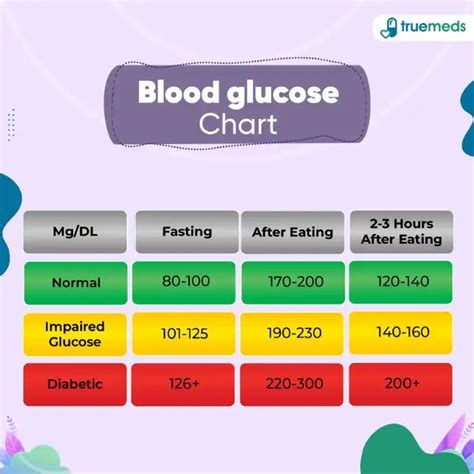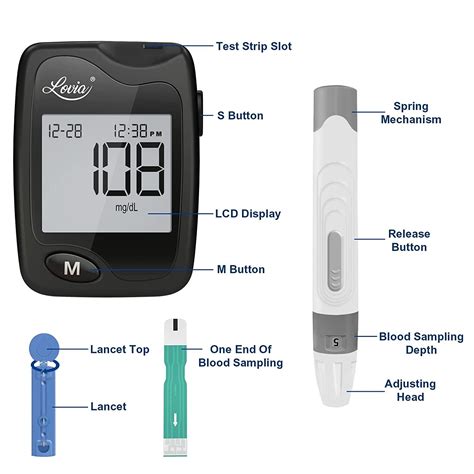Intro
Learn about normal blood sugar levels, glucose targets, and healthy ranges, including fasting, postprandial, and average blood glucose levels to manage diabetes and prediabetes effectively.
Maintaining normal blood sugar levels is crucial for overall health and well-being. Blood sugar, also known as glucose, is the primary source of energy for the body's cells. When blood sugar levels are within a normal range, the body functions properly, and the risk of developing various health problems is reduced. On the other hand, high or low blood sugar levels can lead to a range of health issues, from mild symptoms like fatigue and dizziness to more severe conditions like diabetes and cardiovascular disease.
Understanding normal blood sugar levels is essential for individuals who want to take control of their health. The American Diabetes Association (ADA) provides guidelines for normal blood sugar levels, which are measured in milligrams per deciliter (mg/dL). According to the ADA, normal blood sugar levels are between 70 and 140 mg/dL. However, these levels can vary depending on factors such as age, diet, and physical activity level. For example, people who are physically active or follow a low-carb diet may have lower blood sugar levels, while those who are sedentary or consume high amounts of sugar may have higher levels.
The importance of maintaining normal blood sugar levels cannot be overstated. When blood sugar levels are within a healthy range, the body can function properly, and the risk of developing chronic diseases like diabetes, heart disease, and certain types of cancer is reduced. Additionally, maintaining normal blood sugar levels can improve energy levels, cognitive function, and overall quality of life. In this article, we will delve into the world of blood sugar, exploring what normal blood sugar levels are, how they are measured, and the factors that can affect them.
What are Normal Blood Sugar Levels?

Normal blood sugar levels are typically measured using a blood glucose meter or through a laboratory test. The results are usually reported in mg/dL, and the normal range is between 70 and 140 mg/dL. However, these levels can vary depending on the time of day, diet, and physical activity level. For example, blood sugar levels tend to be higher after eating and lower after fasting. The ADA recommends the following blood sugar targets for people with diabetes: before meals, less than 130 mg/dL, and after meals, less than 180 mg/dL.
Factors that Affect Blood Sugar Levels
Several factors can affect blood sugar levels, including diet, physical activity level, stress, and certain medications. For example, consuming high amounts of sugar or refined carbohydrates can cause blood sugar levels to rise, while regular physical activity can help lower blood sugar levels. Stress can also affect blood sugar levels, as it can cause the body to release stress hormones like cortisol and adrenaline, which can raise blood sugar levels.How to Measure Blood Sugar Levels

Measuring blood sugar levels is a simple process that can be done using a blood glucose meter. These meters are available at most pharmacies and are relatively inexpensive. To measure blood sugar levels, a small drop of blood is placed on a test strip, which is then inserted into the meter. The meter provides a reading of the blood sugar level, usually in mg/dL. There are also continuous glucose monitors (CGMs) available, which can provide real-time readings of blood sugar levels throughout the day.
Tips for Maintaining Normal Blood Sugar Levels
Maintaining normal blood sugar levels requires a combination of healthy lifestyle habits, including a balanced diet, regular physical activity, and stress management. Here are some tips for maintaining normal blood sugar levels: * Eat a balanced diet that includes plenty of fruits, vegetables, whole grains, and lean protein sources. * Avoid consuming high amounts of sugar and refined carbohydrates. * Engage in regular physical activity, such as walking, jogging, or cycling. * Practice stress-reducing techniques, such as meditation or deep breathing. * Get enough sleep each night, aiming for 7-8 hours.The Benefits of Maintaining Normal Blood Sugar Levels

Maintaining normal blood sugar levels has numerous benefits, including:
- Reduced risk of developing chronic diseases like diabetes, heart disease, and certain types of cancer.
- Improved energy levels and cognitive function.
- Enhanced overall quality of life.
- Reduced risk of complications from diabetes, such as nerve damage, kidney disease, and blindness.
- Improved mental health and reduced risk of depression and anxiety.
Common Symptoms of High or Low Blood Sugar Levels
High or low blood sugar levels can cause a range of symptoms, including: * Fatigue and weakness * Dizziness and lightheadedness * Headaches and blurred vision * Increased thirst and urination * Cuts or wounds that are slow to heal * Tingling or numbness in the hands and feetManaging Blood Sugar Levels with Diet and Exercise

Diet and exercise play a crucial role in managing blood sugar levels. A healthy diet that includes plenty of fruits, vegetables, whole grains, and lean protein sources can help regulate blood sugar levels. Regular physical activity, such as walking, jogging, or cycling, can also help lower blood sugar levels and improve insulin sensitivity. Here are some tips for managing blood sugar levels with diet and exercise:
- Eat regular meals to avoid spikes in blood sugar levels.
- Choose complex carbohydrates, such as whole grains, fruits, and vegetables, which are rich in fiber and take longer to digest.
- Incorporate lean protein sources, such as chicken, fish, and tofu, into your diet.
- Engage in regular physical activity, aiming for at least 150 minutes of moderate-intensity exercise per week.
Stress Management Techniques for Blood Sugar Control
Stress can have a significant impact on blood sugar levels, as it can cause the body to release stress hormones like cortisol and adrenaline, which can raise blood sugar levels. Here are some stress management techniques that can help regulate blood sugar levels: * Meditation and deep breathing exercises * Yoga and tai chi * Progressive muscle relaxation * Journaling and writing * Spending time in natureBlood Sugar Monitoring and Tracking
Monitoring and tracking blood sugar levels is essential for maintaining normal blood sugar levels. Here are some tips for monitoring and tracking blood sugar levels:
- Use a blood glucose meter to measure blood sugar levels regularly.
- Keep a log of blood sugar levels, including the date, time, and any factors that may have affected blood sugar levels, such as diet or physical activity.
- Use a continuous glucose monitor (CGM) to provide real-time readings of blood sugar levels throughout the day.
- Share blood sugar logs with healthcare providers to get a better understanding of blood sugar levels and make adjustments to treatment plans as needed.
Common Mistakes to Avoid When Managing Blood Sugar Levels
Here are some common mistakes to avoid when managing blood sugar levels: * Not monitoring blood sugar levels regularly * Not taking medication as prescribed * Not following a healthy diet and exercise plan * Not managing stress effectively * Not getting enough sleep each nightConclusion and Next Steps

In conclusion, maintaining normal blood sugar levels is crucial for overall health and well-being. By understanding what normal blood sugar levels are, how they are measured, and the factors that can affect them, individuals can take control of their health and reduce the risk of developing chronic diseases. By incorporating healthy lifestyle habits, such as a balanced diet, regular physical activity, and stress management, individuals can maintain normal blood sugar levels and improve their overall quality of life. If you have concerns about your blood sugar levels or would like to learn more about managing blood sugar levels, consult with a healthcare provider or a registered dietitian.
We invite you to share your thoughts and experiences with managing blood sugar levels in the comments section below. What tips and strategies have you found to be most effective in maintaining normal blood sugar levels? What challenges have you faced, and how have you overcome them? By sharing your story, you can help others who may be struggling with managing their blood sugar levels.
What are normal blood sugar levels?
+Normal blood sugar levels are between 70 and 140 mg/dL, according to the American Diabetes Association.
How often should I check my blood sugar levels?
+It's recommended to check blood sugar levels at least once a day, and more often if you're taking medication or have a history of high or low blood sugar levels.
What are the symptoms of high or low blood sugar levels?
+Symptoms of high or low blood sugar levels can include fatigue, dizziness, headaches, and increased thirst and urination.
How can I manage my blood sugar levels through diet and exercise?
+Eating a balanced diet that includes plenty of fruits, vegetables, whole grains, and lean protein sources, and engaging in regular physical activity, such as walking or jogging, can help manage blood sugar levels.
What are the benefits of maintaining normal blood sugar levels?
+Maintaining normal blood sugar levels can reduce the risk of developing chronic diseases, improve energy levels and cognitive function, and enhance overall quality of life.
